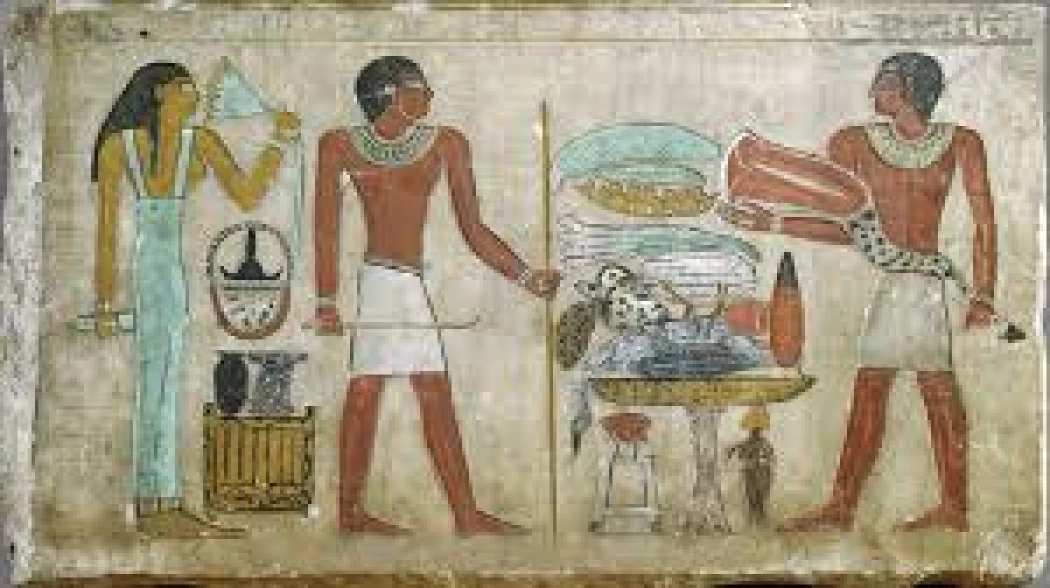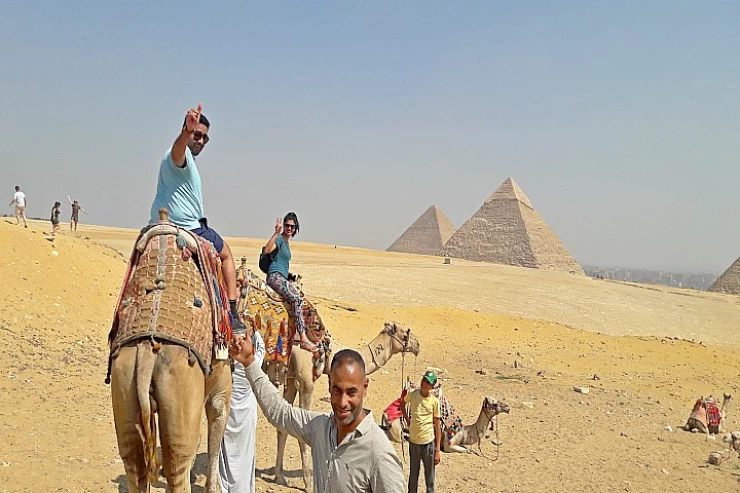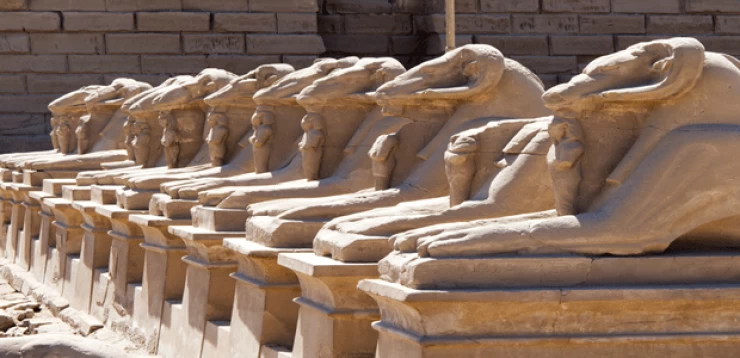
The Middle Kingdom
The Middle Kingdom in Egypt
After the Old Kingdom ended and the first intermediate period began, Egypt was divided and deteriorated. Still, when Mentahotep II became king, he reunited Ancient Egypt and brought prosperity to Egypt once again.
The 11th Dynasty is one of the last of the First Intermediate Period, but it was distinguished by prosperity and began a new kingdom with new achievements.
The 11th Dynasty is one of the last of the First Intermediate Period, but it was distinguished by prosperity and began a new kingdom with new achievements.
King Mer Nefer Ra'ai was considered the most powerful king of the Thirteenth Dynasty until it ended and the Hyksos ruled, so the Middle Kingdom was over, and another period of decline and weakness, called the Second Intermediate Period, began.
Middle Kingdom Dynasties
The 11th dynasty
A king came from Thebes and united Egypt again, and the 11th dynasty began with the rule of King Mentahotep II, who was able to defeat the king of Ahnasia and start Egypt as a unified nation, as he went on military campaigns in Nubia and was able to control the Sinai.
King’s worship returned during this period, with more than one king represented as a god during his reign, for example, Mentuhotep II, who represented himself as Amun.
His son, Mentuhotep III, continued his father's success in increasing Egyptian authority over the eastern Delta and also increased his interest in trade, sending the first Egyptian expedition to the country of Punt.
Then, after that, historians were different, as some of them said that Egypt was ruled by Mentahotep IV, but strangely, his name was deleted from the history records, and others say that Egypt remained for many years without a king until the appearance of archives of campaigns on the Red Sea coast.
These campaigns were most likely carried out by the founder of the 12th Dynasty, who some historians have said was the one who took the throne from Mentuhotep and erased his name from history, but this is not certain.
12th Dynasty
This period was more focused on equipping the army to secure the southern borders and Sinai, and Amenemhat I conducted campaigns on the Delta to secure Egypt's defenses. He built walls in the eastern Delta and changed the capital of Egypt so that Lasht became the capital of Egypt instead of Thebes, although he was fortified, he was a provincial ruler with an important power to be reckoned with.
After twenty years of King Amenemhat's rule, he made his son share the rule with him until he was killed in a conspiracy after 33 years of ruling Egypt, and his son Senwosret I followed him and continued to expand and strengthen Egypt until he entered Kana'an and did the same as his father and made his son share the rule with him until he died after 46 years of rule.
Amenemhat II came, where he was making peace agreements, and it was a period of peace and safety, according to what was recorded on the walls of Manaf, and it remained so until his son Senwosret III came and ruled Egypt and did not have many details until the king came after him, who made a great achievement in the ancient Egyptian economy.
The reign of King Senwosret III began with a great king who fought himself in battles and dug a canal to make it easier to travel to Nubia, which then developed in several eras until the Suez Canal became the most important waterway in the world.
Senwosret III made the country governed by the government instead of the regional rulers, which may have ended during his reign, although this is not emphasized and was developed in more than one place.
His reign was so rich and full of accomplishments that the Greeks later gave him the nickname Sesostris, a name given to any great warrior, just as Senwosret was a great warrior and an amazing king.
Then came Amenemhat III, whose period was full of wonderful achievements; for example, he focused on the mining in Sinai, began to develop lands in Fayoum, and continued to fortify Egypt's defenses in Nubia, and his period was a period of prosperity until, at the end of this dynasty, crops began to decrease in the reign of Amenemhat IV, and the state began to weaken, and Egypt was ruled by many rulers through Sobek Hatab and Nefer Hatab I until Sobek Hatab IV, who was the last king of the 13th dynasty.
Then Egypt disintegrated and continued to weaken until the start of the second intermediate period, which did not last more than 250 years until Egypt fell under the occupation of the Hyksos, thus ending a great period of prosperity in Egypt and beginning a period full of darkness until it returns in the New Kingdom era at the hands of the liberator of Egypt from the Hyksos.
















